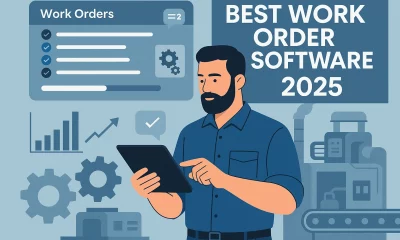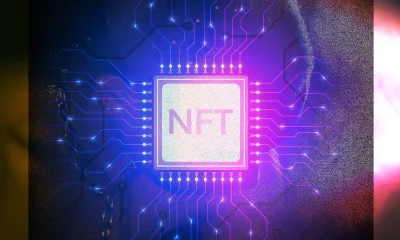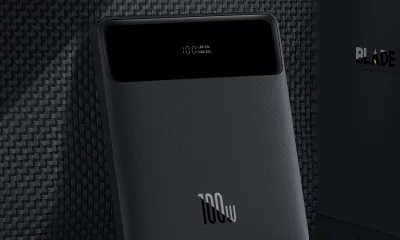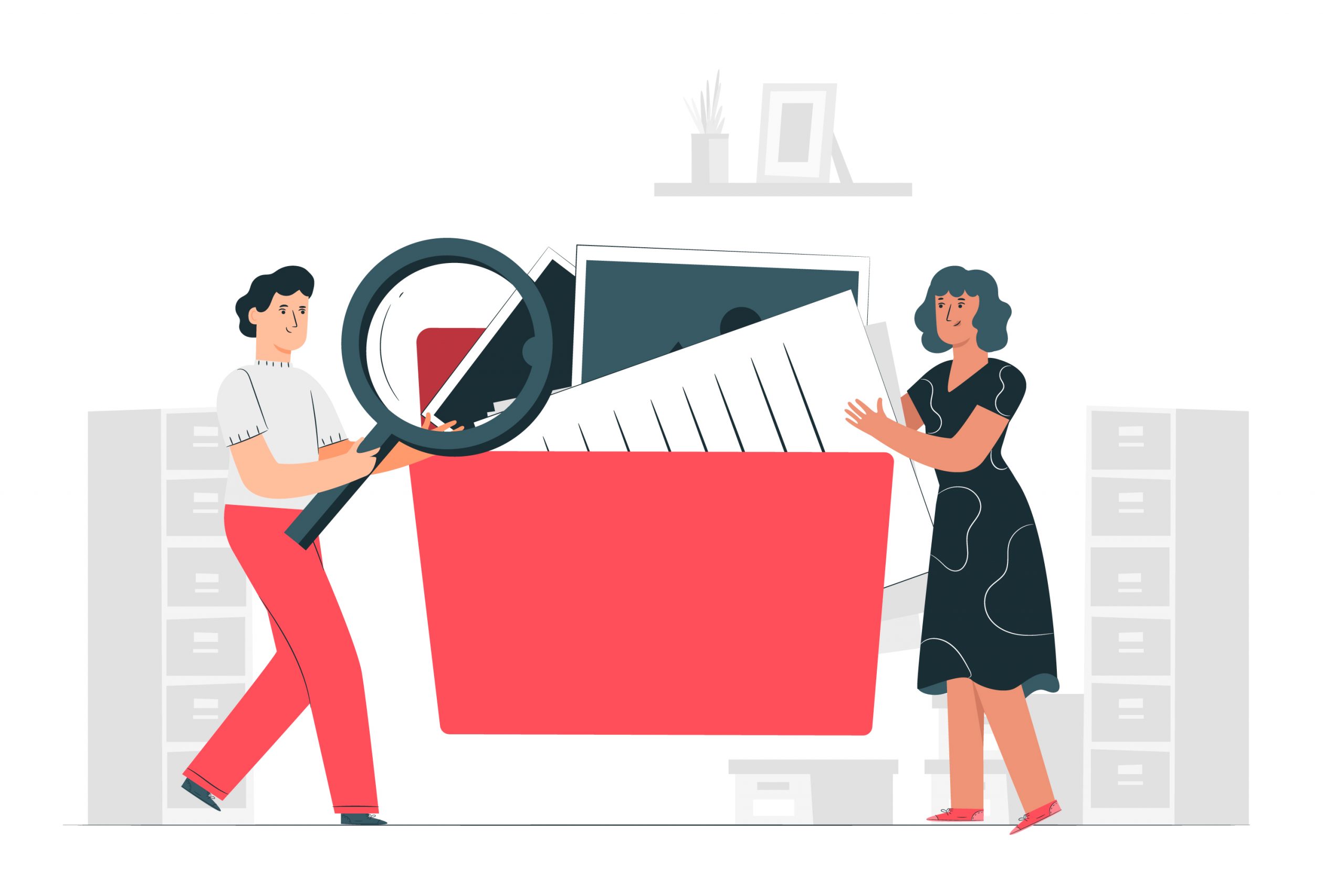Blockchain
How Does Blockchain Technology Work?
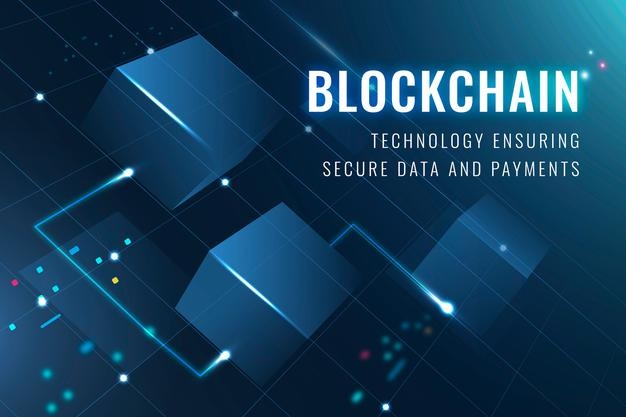
As the core mechanics of Blockchain is difficult and extremely complex, but the basic idea is simple – to decentralize the storage of data so that these data cannot be owned, controlled, or manipulated by a central actor or by a third-party source. Blockchain is also termed as a shared, unchanged ledger that facilitates the process of noting down transactions and tracking or finding assets in a business firm’s network. A given asset can be tangible for instance a house, car, cash, land; or intangible such as intellectual property, patents, copyrights, branding. Usually, accepting any value can be easily tracked and traded by a blockchain network. This process reduces risk and cuts costs in all the steps and procedures involved.
A simple live example is, consider understanding blockchain technology as a Google Document. When we create a document and share it with a certain group of people, it gets distributed instead of getting copied or transferred. This creates a decentralized distribution chain that gives everyone free hand towards the document. In this process, no one is locked out awaiting changes from a third party. On the other hand, all the following modifications to the document gets recorded in real-time. Thus, making other changes completely convenient and fair.
Why is blockchain so important in today’s world?
Certain businesses carry no information behind them. In such cases, the faster the information is received, and if it gets more accurate than ever, the better. It is perfect for supplying that information as it provides immediate, shared, and transparent information. This information is stored on an unchanged ledger which can be accessed only by accessible members. Such networks can track various orders, payments, productions, etc. Just because all the members share a single piece of truth, all details are end to end. Thus, it provides confidence, as well as new efficiencies and opportunities.
Features of Blockchain Technology
There are a lot of effective features of these technologies, mention some of the key features are:
- Immutability – There are a lot of features available, but among them “Immutability” no doubt tops the list. It means something which can’t be unchanged or varied. This is one of the top blockchain features which makes sure that the technology remains unharmed i.e. permanent and unalterable network.
- Decentralized – The system is decentralized as it doesn’t have any ruling authority or any particular person looking after the framework. As the system doesn’t require any governing authority, it can directly be operated from the web and store our assets on desired spots.
- Enhanced security – Each and every piece of information of the system is coded or scripted cryptographically. The information protects the true nature of the data. For this process, any input data gets through a mathematical algorithm producing a different kind of value, but the initial length is always fixed.
- Distributed Ledgers –It’s all out in the open, easy to grab. It has nowhere to hide. Although the case for private or federated blockchain is a bit different. But still, in those cases, many people face what really happens in the ledger.
Benefits of using Blockchain Technology
There are many benefits of such incredible technology, but some of the master’s choice advantages of using such a program are as follows:
Pros of Blockchain Technology
- Trust – Blockchain creates trust where it is somewhat either nonexistent, unproven. Thus, these entities engage in business dealings rapidly. This involves transactions or sharing of data that was incomplete or would have required an intermediary to do so.
- Reduced Cost – Blockchain is also beneficial as it cut costs for organizations. It creates efficiencies in processing transactions. It also reduces manual tasks. It can also lose up the reporting and auditing processes.
- Speed – By replacing the pending manual processes in transactions, blockchain can handle transactions significantly faster than conventional methods. They also are a plus one in managing a transaction in seconds or less.
- Tokenization – Tokenization is the process where the value of an asset doesn’t matter whether a physical or digital one, is converted into a digital platform token. This newly created digital token is then recorded on and then shared by using blockchain.
Cons of using Blockchain
- Scalability is an issue – Blockchains are not scalable as their counterpart is not a centralized system. The transactions are completed depending on the network congestion. This problem is related to over-gaining issues with other blockchain networks. In simple words, the more nodes join the network, the more is the chances of slowing down.
- Sometimes inefficient – The entire process needs to be handled in a better way because whenever the data is updated the nodes replicate themselves. The size of the blockchain enlarges with more efficient transactions and nodes. If further continued, then the whole network is slowed down. This is not the way for commercial Blockchains as the network needs to be fast and secure at the same time simultaneously.
How Does Blockchain Technology Work?
Blockchain, the very term is defined as a shared ledger that allows lakhs of connected computers and servers to work on a particular, secured, and immutable ledger. It can perform user transactions as per its functions without involving any third-party intermediaries. In order to perform its tasks, all it is needed is to have the specific wallet of the particular. When talking about a Blockchain wallet, it is nothing but a system that allows one individual to spend cryptocurrencies like Bitcoins, Ethereum, etc. on their desired platform. Such wallets are secured by cryptographic methods along with public and private keys so that the individual can manage and have full control over his transactions with full surety and trust.
Now, this is how Blockchain technology functions. In the beginning, when a user makes a transaction using such a Blockchain network, a block eventually gets created, which shows that transaction is created. After this procedure, the requested transaction is broadcasted over the peer-to-peer network, consisting of computers, known as nodes. This whole program then helps validate the transaction. An authorized transaction generally involves cryptocurrency, contracts, records, or any other valuable information. Once a transaction is verified, it is combined with other blocks which finally creates a new block of data for the ledger to end the crucial program by using such technology.
To understand the working, let’s go brief:
Objective: Working on Blockchain
Blockchain technology is one of the best technological inventions ever of this decade. The invention may even hype more than the invention of the internet itself. It provides you with a platform where you can exchange money without the need of any present supervising authority. The worker who first gets to complete editing the block is awarded bitcoin for their work.
These attracting rewards are paid with a combination of newly minted bitcoin and network fees, which are passed on to the fortunate buyer and thriving seller. The impending money depends on the volume of transactions. Completing the purchase and when it is crypto-graphically confirmed, it gets added to a block on the following distributed ledger. The majority must confirm the sale.
Working of blockchain with examples
To understand Blockchain works, there is a very simple way of defining with some easy examples, imagine you & your friend bet $50 on the color of the car your third friend is willing to buy. You bet it is for white & your friend goes for the Cherry Red. There are three ways to deal with this:
- One trust each other with their work.
- both the party can turn it into a contract. With the help of this contract both of you are willing to pay the amount and if anyone takes a foot back winner will get additional money to cover the legal expenses? But this method doesn’t seem to be a good method to deal with transactions.
- Both of you can compensate a middle man into your deal and both will give $50 to that trusted third party. And at the end, the winner would receive all the money from the third party.
Blockchain a distributed network
A significant part of the estimation of the bitcoin blockchain is that it is a very enlarged system where validators, just like those to the cameras in the relationship, come forward meeting an agreement in which they see a similar thing. Rather than cameras, in which they utilize numerical confirmation.
Conclusion
While the Bitcoin system is the immerging and best-known system software of blockchain technology, there are thousands of cryptocurrencies that are built-in support of this emerging technology. While it remains to be seen if Bitcoin will succeed in completely evacuating or defeating all other forms of traditional payment methods. The hi-tech applications of blockchain technology are growing rapidly all over, and many experts all over the world indicate they may lead to drastic changes across all firms and markets. This article was hopefully successful enough to reach all the benefits and the workings of this new technology. The basic meaning and the concept clearly to all the readers are supposing clear by the end.

-

 Business3 years ago
Business3 years agoThe Most Efficient Ways To Use The Best 6 Business Keynote Presentations
-

 Apps and Software6 months ago
Apps and Software6 months agoStarbucks Partner Hours App Login Guide
-

 Entertainment6 months ago
Entertainment6 months ago15 Best IPTV Service Providers in the UK 2025
-

 Tech3 years ago
Tech3 years agoIs Forecasting A Part Of Data Science?
-

 Economy3 years ago
Economy3 years agoWhat does it mean to Dream About Pennies?
-

 Entertainment6 months ago
Entertainment6 months ago10 Best Free Video Player Apps For Apple TV
-

 Travel2 years ago
Travel2 years agoBenefits of UK Skilled Worker Visa for International Professionals
-

 Entertainment2 years ago
Entertainment2 years agoHow To Enhance Your Viewing with Video Subtitle Support
